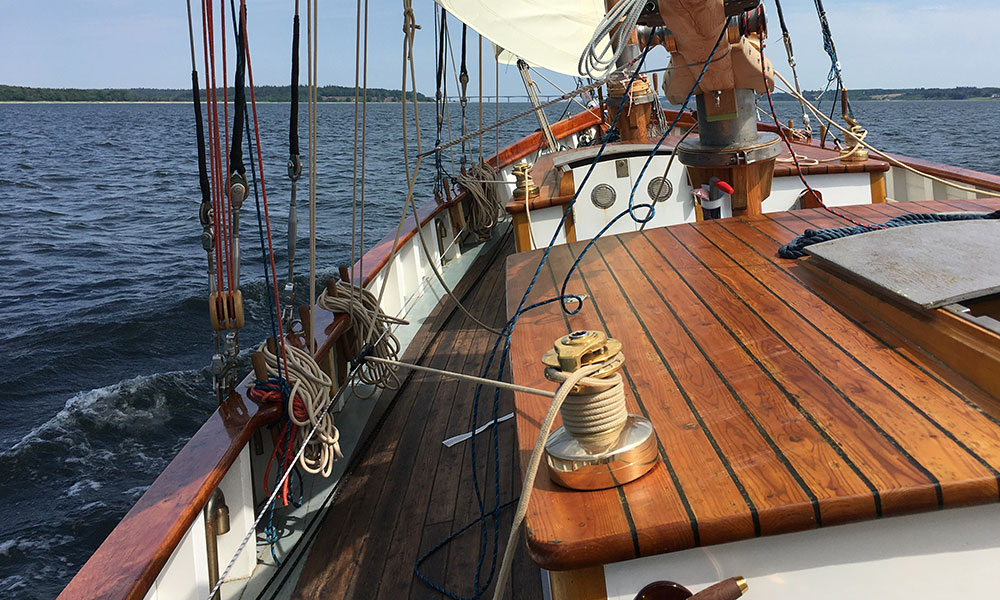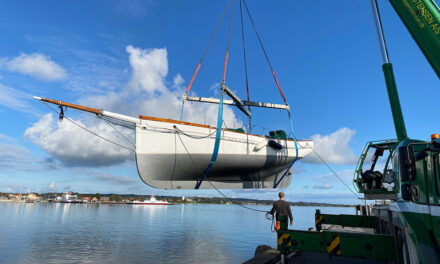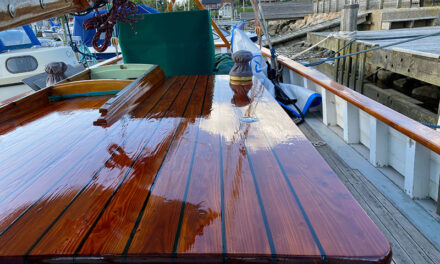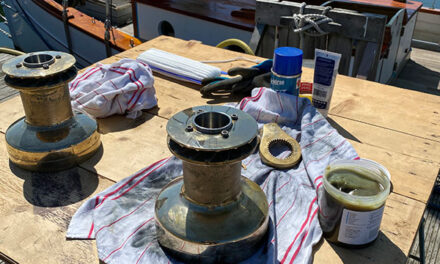Well, refinishing the gunwale has been on the to-do list for a while. I never thought it would take the better part of a whole week to strip and scrape off the old lacquer, sand out the unavoidable scratches with successively finer sandpaper, fill the cracks and build up the new finish.

After many years of being exposed to sun, rain and salt water the gunwale was bleached-out and the lacquer was not sticking to the wood any more. It was time to refinish.
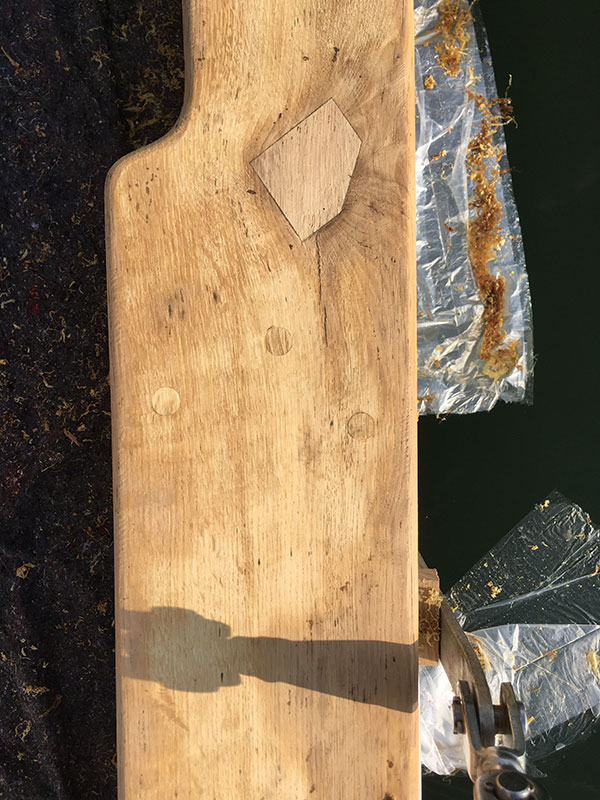
Refinish – faster said then done. After two rounds of paint stripper and scraping off the gue, bare wood (oak) is surfacing. In the light areas the wood fibres are soft, destroyed by UV rays.
I don’t now how much longer we would have had to painstakingly wrestle the layers of old lacquer off the wood without Henry’s nifty assortment of home-made scrapers, which he sometimes re-sharpened over lunch so we could have a fresh go at it despite aching backs…

Work in progress – oh these nooks and crannies…
Timing was good. With the lacquer gone we could attack some jobs that needed to be done on the gunwale before we could even think about going sailing – like drilling holes for the belaying pins for the halyards and the attachment points for the sheet leads.
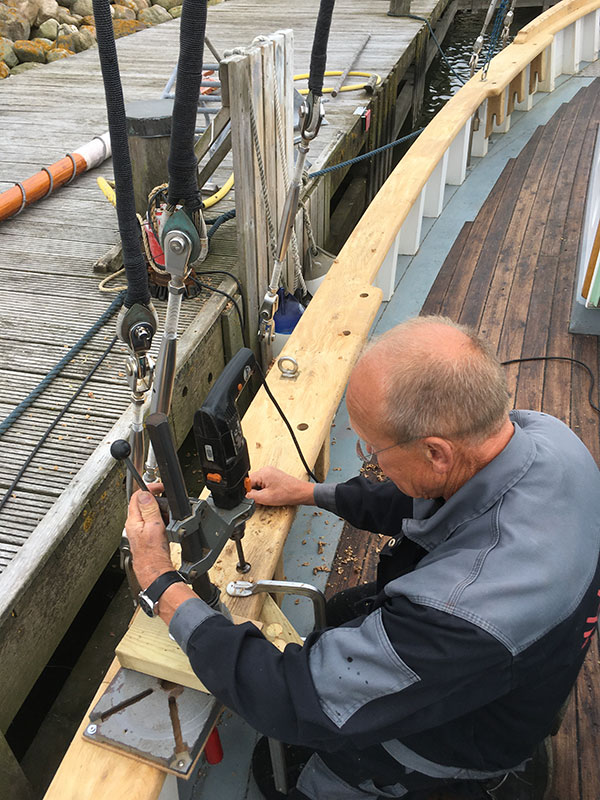
While the lacquer is off might as well drill the holes for the belaying pins and sheet leads.
Having used AWLWood from Akzo Nobel on various spars before and after testing it on scrap wood pieces laid out on deck for two years we decided to use it on the gunwale which receives a lot of direct sun and is quite exposed to the elements.
The stuff is pretty tough and supple. The very liquid primer soaks deep into the wood and offers an excellent base for the top coats (a minimum of eight are recommended by the manufacturer).
There we go: one coat of yellow primer…

Bare wood on the bottom – scraped and sanded – ready for the primer
After about six coats people start to wonder whether the lacquer guy is suffering from some sort of obsession. It does look pretty good, even after three or four coats – except for the bubbles that emerge from the pores in the wood – which oak has plenty of. The wind and heat from the sun do their part of driving out the air from the pores.
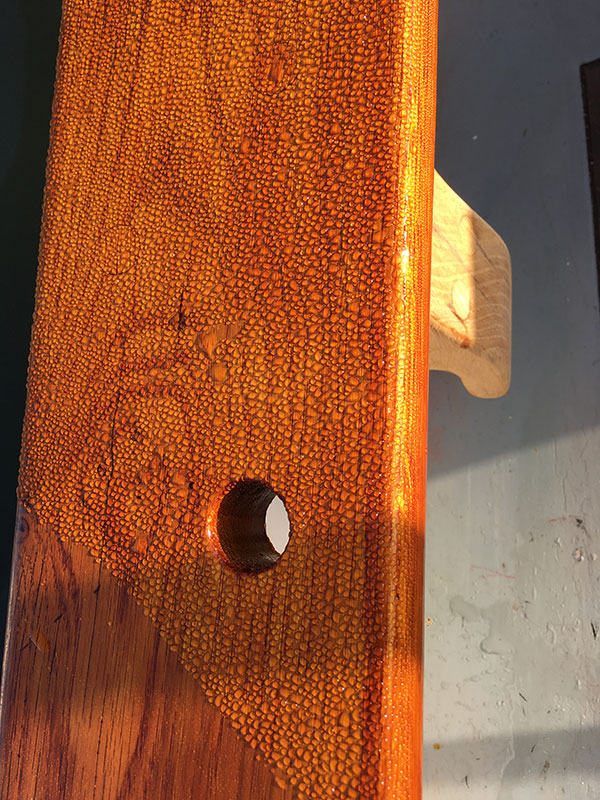
Starting to look good in the morning dew – several more coats to go.
The big effort lies in the preparation. Once the first layers are on the preparation for further layers is easy. A slight sanding between every second layer that’s all. Every layer more keeps those UV-rays away from the wood.
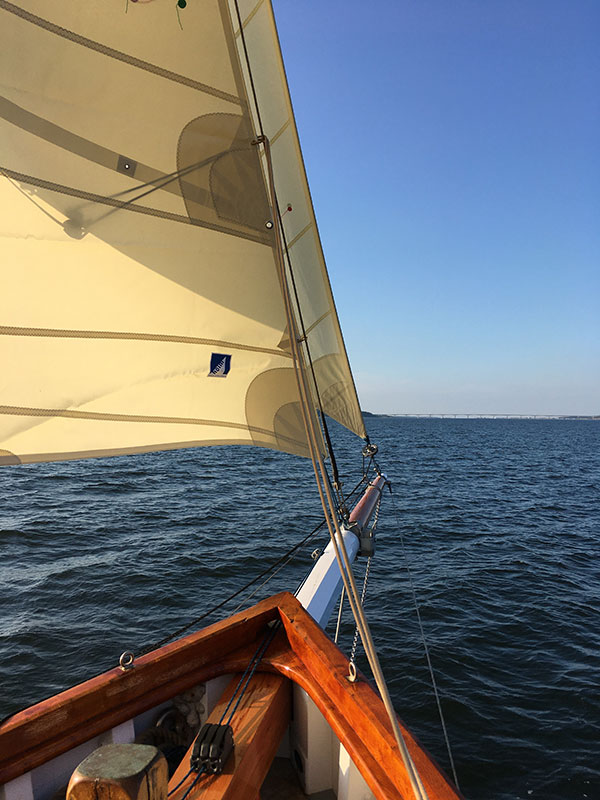
A fine finish is a feast for the eyes, complements the boat and adds an enjoyable touch of luxury.

